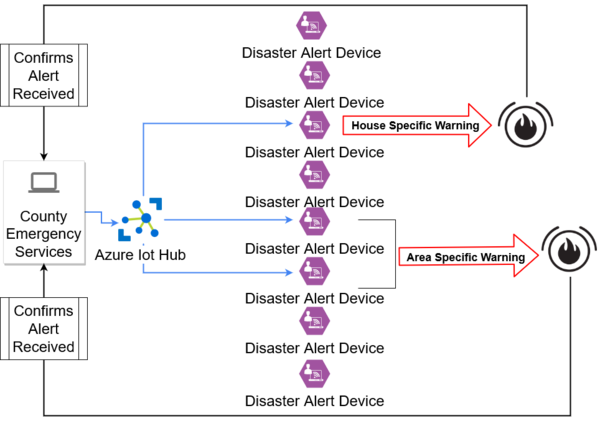A Cloud-Enabled Communication Strategy for Wildfire Alerts
(1) San Ramon Valley High School
https://doi.org/10.59720/19-127
The latest wildfires in California have claimed numerous lives and caused billions of dollars in damages. Inadequate alert systems during these natural disasters have resulted in millions of dollars of avoidable damages and deaths. Misinformed or unaware citizens are the most likely to be injured or die during a natural disaster. The traditional alert system in California consists of Wireless Emergency Alerts (WEAs), which lack location specificity, and sign-up-based technology which is limited by the number of sign ups. Those who do not have phones or have a silence option on their devices are most at risk from the current alert system. In the age of affordable computers, this study analyzes the potential viability of an Internet of Things approach to disaster alert. We developed cloud-enabled crisis connection for disaster alerts (CRISIS-CONNECT) to mitigate problems associated with the current alert system. Preliminary tests demonstrate that the novel CRISIS-CONNECT alert system can perform over high and low data speeds, whereas the existing WEA system does not. We further demonstrate that centralized CRISIS-CONNECT alerts can be sent with greater global positioning system (GPS) precision than WEA. Last, we report that the CRISIS-CONNECT device has a comparable battery life to the iPhone 6s, whether in active or standby mode. Taken together, our data positions CRISIS-CONNECT as a strong alternative to address the shortcomings of the current WEA system.
This article has been tagged with: